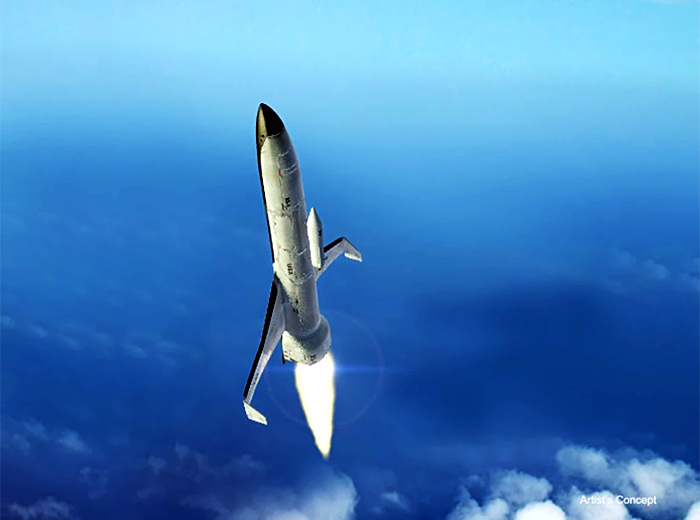
The Defense Advanced Research Projects Agency has announced the selection of three teams to conduct Phase One design studies for the agency’s Experimental SpacePlane 1 (XS-1).
DARPA has selected Boeing (working with Blue Origin), Masten Space Systems (working with XCOR Aerospace), and Northrop Grumman Corporation (working with Virgin Galactic) to design the reusable experimental spaceplane, which is expected to fly ten times in ten days, fly to Mach 10+ at least once, and launch a 3,000-5,000 pound payload to orbit.

Program manager Jess Sponable said that DARPA “chose performers who could prudently integrate existing and up-and-coming technologies and operations, while making XS-1 as reliable, easy-to-use and cost-effective as possible. We’re eager to see how their initial designs envision making spaceflight commonplace—with all the potential military, civilian and commercial benefits that capability would provide.”
According to a DARPA press release, the XS-1 program “aims to develop a fully-reusable unmanned vehicle that would provide aircraft-like access to space and deploy small satellites to orbit using expendable upper stages. XS-1 seeks to deploy small satellites faster and more affordably, and develop technology for next-generation hypersonic vehicles.
“XS-1 envisions that a reusable first stage would fly to hypersonic speeds at a suborbital altitude. At that point, one or more expendable upper stages would separate and deploy a satellite into Low Earth Orbit (LEO). The reusable first stage would then return to earth, land and be prepared for the next flight. Modular components, durable thermal protection systems and automatic launch, flight and recovery systems should significantly reduce logistical needs, enabling rapid turnaround between flights.”
In addition to creating vehicle designs, the three teams will identify and conduct critical risk reduction of core component technologies and processes and develop a technology maturation plan leading to fabrication and flight-test.
DARPA expects the teams to “explore alternative technical approaches from the perspectives of feasibility, performance, system design and development cost and operational cost. They must also assess potential suitability for near-term transition opportunities to military, civil, and commercial users. These opportunities include both launching small payloads per the program goals as well as others, such as supporting future hypersonic testing and a future space-access aircraft.”
DARPA did not announce the size of the contracts, but previous statements place the awards at about $3 million each. (Boeing has just announced that its award is $4 million.)
Technology developed in the XS-1 program could transition into future fully reusable orbital systems, such as XCOR’s Lynx Mark V (the successor to the Lynx suborbital spacecraft) or Blue Origin’s VTVL system. DARPA has not specified a launch or landing mode, but it is anticipated that XS-1 concepts will include both vertical and horizontal takeoff and landing systems.
[youtube=http://www.youtube.com/watch?v=67tbhFzh1OM&w=700]



